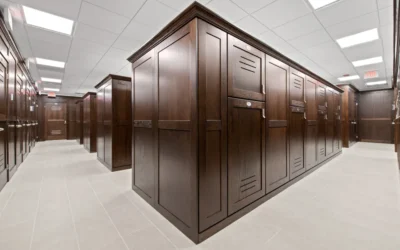Hit by a rising tide of new construction and economic trouble spots across the country, publicly traded self-storage REITs have pulled back significantly from their acquisitions of existing facilities.
Acquisitions by the top five self-storage real estate investment trusts (REITs)—Public Storage, Extra Space Storage, CubeSmart, Life Storage and National Storage Affiliates—are off by an annualized 70 percent compared to last year’s high of $5 billion in facility purchases, according to a second-quarter report by the self-storage group at MJ Partners, a Chicago-based real estate brokerage and investment banking company.
The major acquisition drop-off is directly attributed to the flood of newly built self-storage facilities coming online across the country, a trend that’s hurt rental prices and overall same-store revenues for the publicly traded companies, the reports says.
“It’s having an impact,” Marc Boorstein, a principal at MJ Partners, said of the increased supply of self-storage facilities across the nation. “This is really a story about supply.”
The shopping spree is over
In addition, some REITs are seeing weakness in specific markets, such as in Houston, where the recent fall in oil prices have hurt the region’s economy, impacting demand for self-storage, said Boorstein.
Wall Street has most definitely noticed the supply, price and same-store revenue trends – and investors have punished the publicly traded companies accordingly, driving down their stock prices by an average 20 percent off their 52-week highs, Boorstein said.
As a result, the REITs have less capital available to draw on for acquisitions. Still, Boorstein emphasized that the overall self-storage industry remains strong, despite the supply, price and revenue pressures on major players.
Taking it slow
While revenues for publicly traded self-storage REITs are down, they’re still increasing, although at a much slower pace. Same-store revenues in the past quarter were up between 1.4 percent and 5.2 percent for the five publicly traded companies, down from the blistering revenue increases of 6.7 percent to 9.6 percent at the same time last year, according to the report.
Meanwhile, occupancy rates have held steady, in the low to mid-90s range, which are historically high levels. Putting the pluses and minuses together, Boorstein said the larger REITs appear to be adjusting to a “more normal” level of activity and performance.
“It’s reverting back to the mean,” Boorstein said. “It means the heady days are over, but we’re still at a healthy level.”
More selective than ever
Tom Doyle, the co-head of the national self-storage team at HFF, said he’s also seeing an acquisition pullback by publicly traded self-storage companies.
“They’re definitely being more selective (in their acquisitions) than they were in the past,” Doyle said.
Doyle compares it to a vehicle hurtling down a highway at 65 miles per hour rather than 90 miles per hour.
“It’s slowing down,” he said. “We’re still in a good position. Just not as good as we were.”
While the REITs are away…
Both Boorstein and Doyle agree on another industry development: Other industry players – such as private equity firms and other major private investors – appear to be picking up the acquisition and development slack left by publicly traded companies – at least for now.
Private players such as Harrison Street Real Estate, Heitman Real Estate, Merit Hill Capital, the Carlyle Group and other experienced or new-entry firms in the market are still going strong, either acquiring or developing facilities, Boorstein said.
And some regional, non-self-storage development firms continue to enter the game, such as JHM Hotel Group, a Greenville, SC-based hotel and restaurant company that recently formed TD Self Storage Enterprise LLC.
“There’s still a lot of activity out there,” said Boorstein. “There’s still strong demand.”
Doyle said companies, both public and private, just have to be more selective about where they buy and build. A major metropolitan market may be overbuilt, in general, but specific neighborhoods, or what he calls “micro markets,” within those regions may still have enormous potential, Doyle said.
“There are still opportunities out there,” Doyle said.









